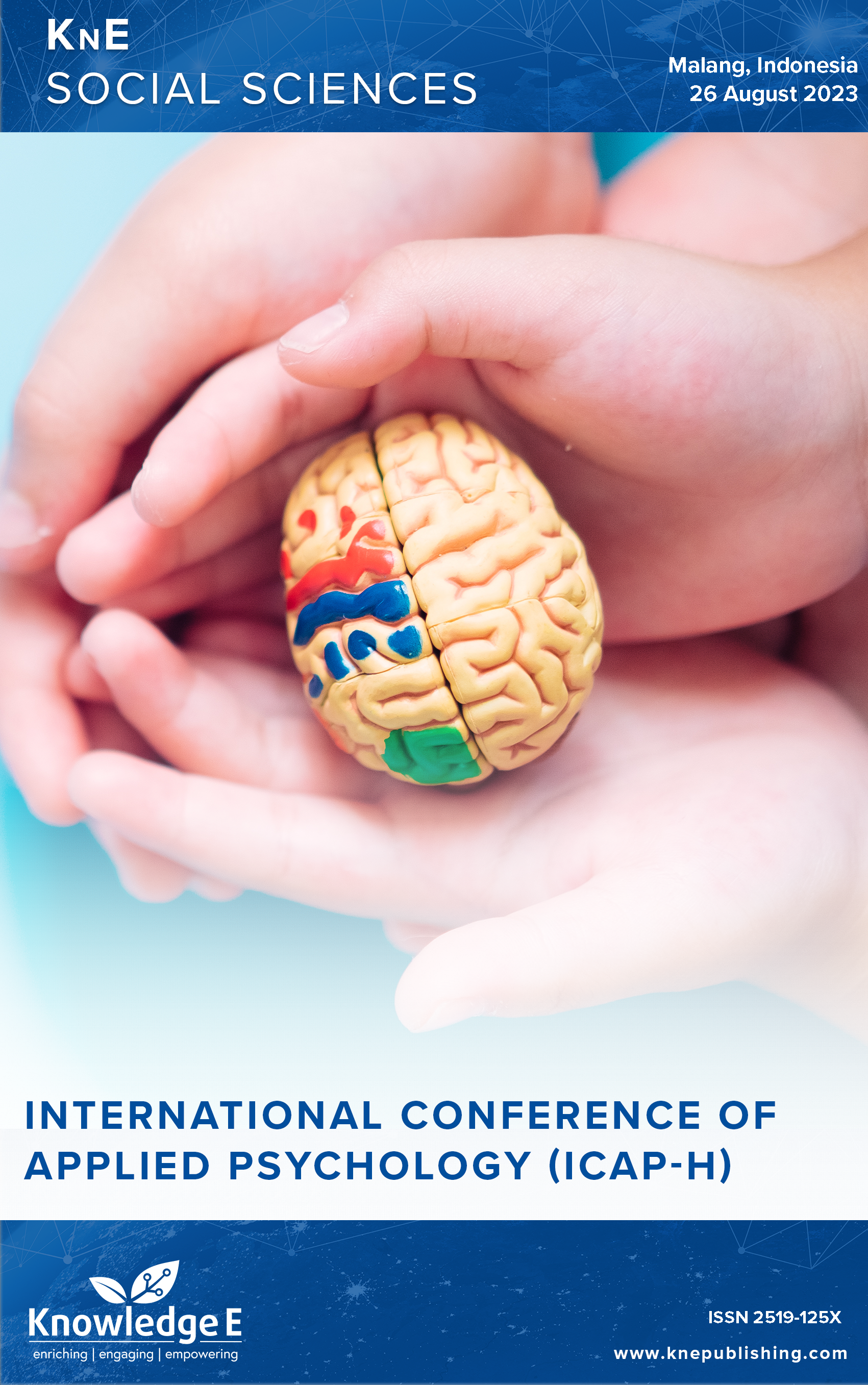The Interaction of Attitude, Intention, and Behavior During Sexual Communication
DOI:
https://doi.org/10.18502/kss.v9i5.15186Abstract
Parents need to have a positive attitude in establishing sexual communication with adolescent. Sexual communication in this study is a principal means of transmitting sexual values, beliefs, expectations, and knowledge from parents to adolescent. A representative and eligible sample was randomly obtained with a total of 315 respondents. The respondents of this study were parents (41–50 years old) who had teenagers between the ages of 14 and 17 years, and had to live together for at least 6 months before the survey was conducted. Three instruments were used; scale of attitudes toward sexual communication, intention to engage sexual communication, and sexual communication behavior of parents–adolescents. Based on the results of mediation tests, it shows that parental attitudes influence parent–adolescent sexual communication behavior through the intention to engage in sexual communication (P = 0.013). A positive attitude toward sexual communication is recommended to encourage parents to conduct sexual communication with adolescents to prevent adolescents from engaging in risky sexual behavior.
Keywords: attitude, intention, risky sexual behavior, sexual communication
References
Santrock JW. Life span development; Perkembangan masa hidup. Ketigabela. PT. Gelora Aksara Pratama; 2011.
Mariani NN, Murtadho SF. Hubungan antara peran orang tua, pengaruh teman sebaya, dan sikap terhadap perilaku seksual pranikah pada siswa-siswi sma negeri 1 jamblang kabupaten cirebon tahun 2017. Care J Ilm Ilmu Kesehat. 2018;6:116. DOI: https://doi.org/10.33366/cr.v6i2.904
Rogers AA. Parent–adolescent sexual communication and adolescents’ sexual behaviors: A conceptual model and systematic review. Adolescent Research Review. 2017;2:293–313. DOI: https://doi.org/10.1007/s40894-016-0049-5
Jaccard J, Dittus P. Parent-teen communication: Toward the prevention of unintended pregnancies. New York: Springer-Verlag; 1991. DOI: https://doi.org/10.1007/978-1-4613-9107-4
Jerman P, Constantine NA. Demographic and psychological predictors of parentadolescent communication about sex: A representative statewide analysis. Journal of Youth and Adolescence. 2010;39:1164–1174. DOI: https://doi.org/10.1007/s10964-010-9546-1
Amaliyah S, Nuqul FL. Eksplorasi persepsi ibu tentang pendidikan seks untuk anak. Psympathic J Ilm Psikol. 2017;4:157–166. DOI: https://doi.org/10.15575/psy.v4i2.1758
Motsomi K, Makanjee C, Basera T, Nyasulu P. Factors affecting effective communication about sexual and reproductive health issues between parents and adolescents in zandspruit informal settlement, Johannesburg, South Africa. Pan African Medical Journal. 2016;25:1–7. DOI: https://doi.org/10.11604/pamj.2016.25.120.9208
Byers ES, Sears HA, Hughes K. Predicting mother–adolescent sexual communication using the integrative model of behavioral prediction. Journal of Family Issues. 2018;39:1213–1235. DOI: https://doi.org/10.1177/0192513X17698183
Márquez Vega MA. Sexual communication of parents and children: The theory of reasoned action and planned behavior. Biomedical Journal of Scientific & Technical Research. 2019;19:14272–14275. DOI: https://doi.org/10.26717/BJSTR.2019.19.003290
Dyson S, Smith E. “There are lots of different kinds of normal”: Families and sex education - Styles, approaches and concerns. Sex Education. 2012;12:219–229. DOI: https://doi.org/10.1080/14681811.2011.609053
Kelleher C, Boduszek D, Bourke A, McBride O, Morgan K. Parental involvement in sexuality education: Advancing understanding through an analysis of findings from the 2010 Irish Contraception and Crisis Pregnancy Study. Sex Education. 2013;13:459–469. DOI: https://doi.org/10.1080/14681811.2012.760448
Ashcraft AM, Murray PJ. Talking to parents about adolescent sexuality. Pediatric Clinics of North America. 2017;64:305–320. DOI: https://doi.org/10.1016/j.pcl.2016.11.002
Kesehatan K. Survey demografi dan kesehatan Indonesia. 2017. Available from: http://www.kpai.go.id/berita/kpai-pelecehan-seksual-pada-anak-meningkat-100/.
Ajzen I, Fishbein M. The prediction of behavior from attitudinal and normative variables. In Higgins ET, Kruglanski AW, editors. Psychology Press; 2000.
Glanz K, Rimer B, Viswanath K. Health and Health. 2008.
Dai M, Wombacher K, Matig JJ, Harrington NG. Using the integrative model of behavioral prediction to understand college students’ hookup sex beliefs, intentions, and behaviors. Health Communication. 2018;33:1078–1087. DOI: https://doi.org/10.1080/10410236.2017.1331306
Ajzen I, Fishbein M. Predicting Changing Behavior. 2010. DOI: https://doi.org/10.4324/9780203838020
Montano DE, Kasprzyk D. Health behavior and health education; Theory, research, and practice. Glanz K, Rimer K, Barbara, Viswanath K, editors. 4th ed. San Francisco: Jossey-Bass A Wiley Imprint; 2008.
Sheeran P. Intention — Behavior relations: A conceptual and empirical review. European Review of Social Psychology. 2002;12. DOI: https://doi.org/10.1080/14792772143000003
Byers ES, Sears HA. Mothers who do and do not intend to discuss sexual health with their young adolescents. Family Relations. 2012;61:851–863. DOI: https://doi.org/10.1111/j.1741-3729.2012.00740.x
Ballonoff Suleiman A, Lin JS, Constantine NA. Readability of educational materials to support parent sexual communication with their children and adolescents. Journal of Health Communication. 2016;21:534–543. DOI: https://doi.org/10.1080/10810730.2015.1103334

